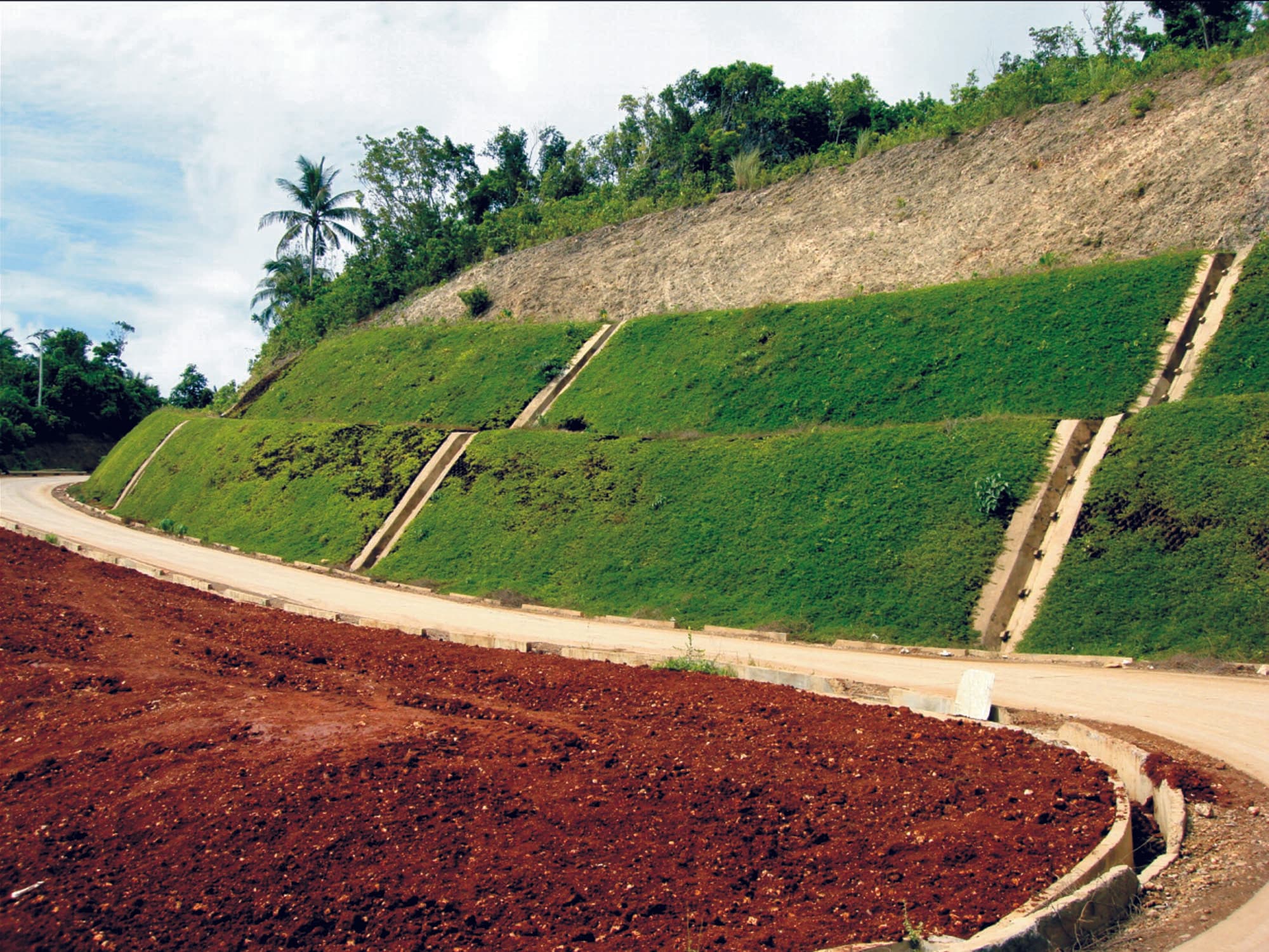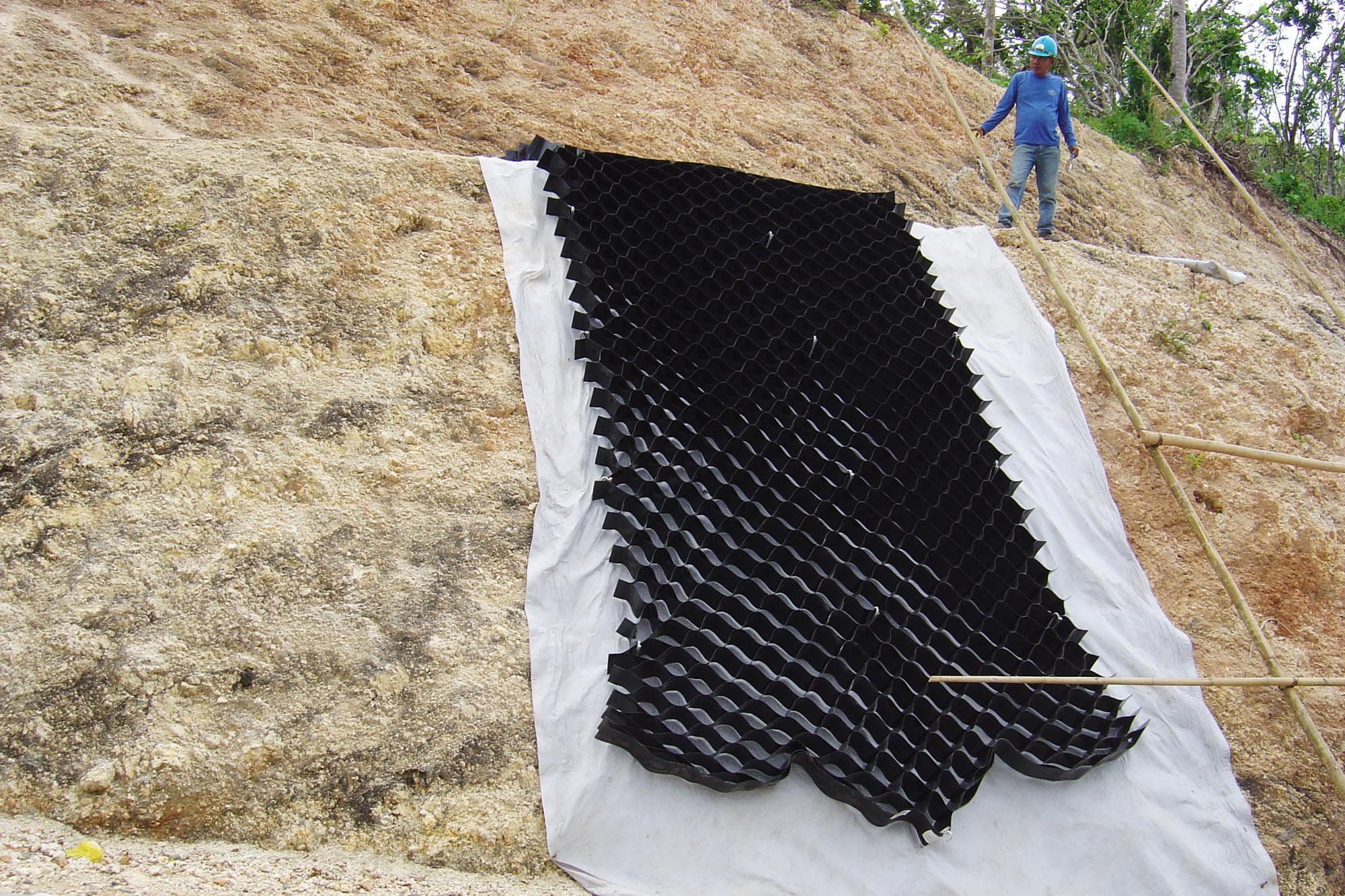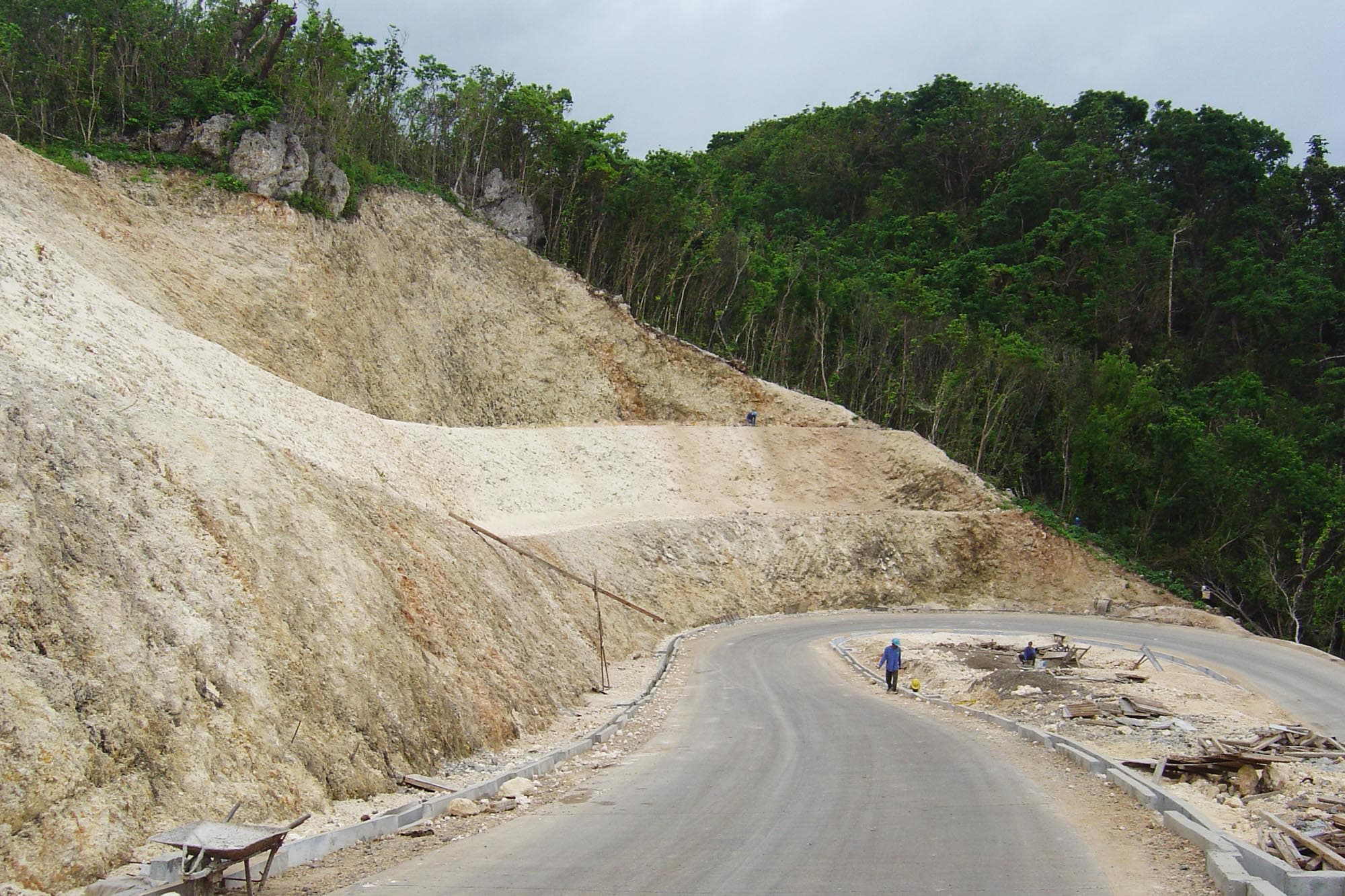Overview
The project is situated on Boracay Island, a stunning tropical paradise south of Manila. Our goal was to address erosion issues on the cut limestone slopes while maintaining the natural beauty of the Boracay tropics.
Challenge
To prevent erosion on the newly cut slope surface, we selected the PROPEX® Envirocell cellular soil confinement system, combined with a layer of MIRAFI® Polyfelt® TS nonwoven geotextiles. The MIRAFI Polyfelt TS geotextile serves as a filter and drainage layer between the slope and PROPEX Envirocell. The PROPEX Envirocell's purpose is to retain sufficient topsoil on the steep slope and promote the growth of grass and other vegetation.
PROPEX Envirocell is made from inert Polyethylene, ensuring it remains unaffected by soil chemicals and degradation caused by prolonged sunlight exposure. Its continuous structure is specifically designed to hold soil and moisture, allowing for rapid vegetation growth in areas where natural vegetation growth is challenging.
Solution
The hard surface slope was cut and shaped into berms approximately 3 m (9.84 ft) high, with a slope inclination ranging from 60 to 70 degrees.
At the top of each slope, an anchor trench was dug to secure the MIRAFI Polyfelt geotextile filter/separator and the PROPEX Envirocell. This setup serves as both a separator between the hard surface and the topsoil and as a drainage layer to collect highly alkaline water seepage from the limestone surface area.
The PROPEX Envirocell was then placed on top of the MIRAFI Polyfelt TS geotextile filter, laced together, and secured with cable ties. Galvanized J-pins were used to firmly anchor the system to the hard surface slope, with a staggered profile at 1.0 m (3.28 ft) spacing.
Topsoil was added inside the cell confinement system, followed by hydroseeding and turfing. The project was divided into two phases, with Phase 1 completed in 2006 and Phase 2 in May 2008.


